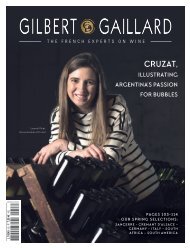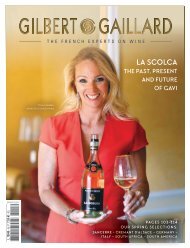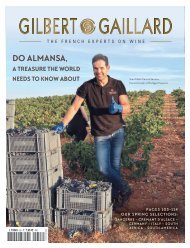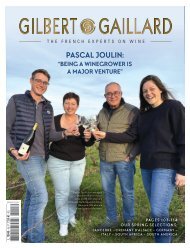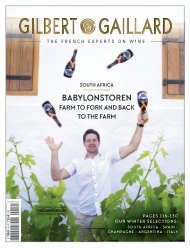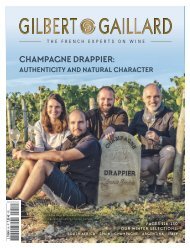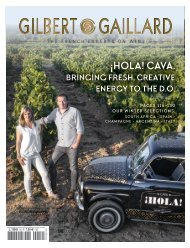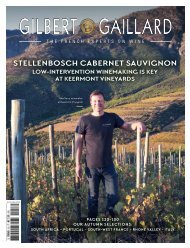You also want an ePaper? Increase the reach of your titles
YUMPU automatically turns print PDFs into web optimized ePapers that Google loves.
CHÂTEAU ISOLETTE IS LOCATED<br />
IN MAGNIFICENT COUNTRYSIDE<br />
WITH A DISTINCTIVE<br />
MEDITERRANEAN FEEL<br />
may seem complex. The proximity of the Rhone and pebble-strewn vineyard sites<br />
dotted in many parts of Costières de Nîmes give it a fairly obvious Rhone identity.<br />
However, the occurrence of garrigue in the North-East, akin to the scrubland found<br />
in Languedoc, and the clear influence of the Mediterranean Sea on the appellation’s<br />
weather patterns, argue in favour of a unique Mediterranean identity, forming a<br />
bridge between Languedoc and Provence.<br />
The Luberon, which is farther away from the Rhone and where the influence is<br />
more Alpine, does not seem to have a clear link to the Southern Rhone, except<br />
culturally through the way the industry is organised around co-operatives and its<br />
varietal range. Its lifestyle and culture are nevertheless distinctively Provencal, with<br />
rosé production accounting for over 50% of appellation output, following in the<br />
footsteps of neighbouring Provence. Despite this, the Luberon is multifaceted and,<br />
as evidenced by our testimonials, high-elevation stony vineyard sites on the northern<br />
slopes of the hills around Château Isolette produce extremely attractive Syrahs, in<br />
the same vein as wines from the southern reaches of the Northern Rhone.<br />
Lastly, the Ventoux and its broad rolling plains has plenty of convincing arguments<br />
too. Its microclimate combines good air flow and significant diurnal shift to<br />
promote the emergence of fresh wines. There are many similarities with the more<br />
central southern Rhone, clearly lending it a Rhone identity. Nevertheless, its wines<br />
are often fresher than those of the Côtes du Rhône. Freshness is a common denominator<br />
across the three appellations, but for different reasons, ranging from maritime<br />
and alpine influence to elevation and exposure, soils and sub-soils.<br />
Ultimately, the last noteworthy shared feature is the characteristic drive which fuels<br />
all three appellations, giving them good potential to continue to move upmarket.<br />
Less expensive than their more prestigious neighbours, the wines crafted by talented<br />
producers in these appellations, like those featured here, offer excellent value for<br />
money and deserve to be discovered without further ado!<br />
36 AUTUMN 2022 • GILBERT & GAILLARD - THE FRENCH EXPERTS ON WINE



